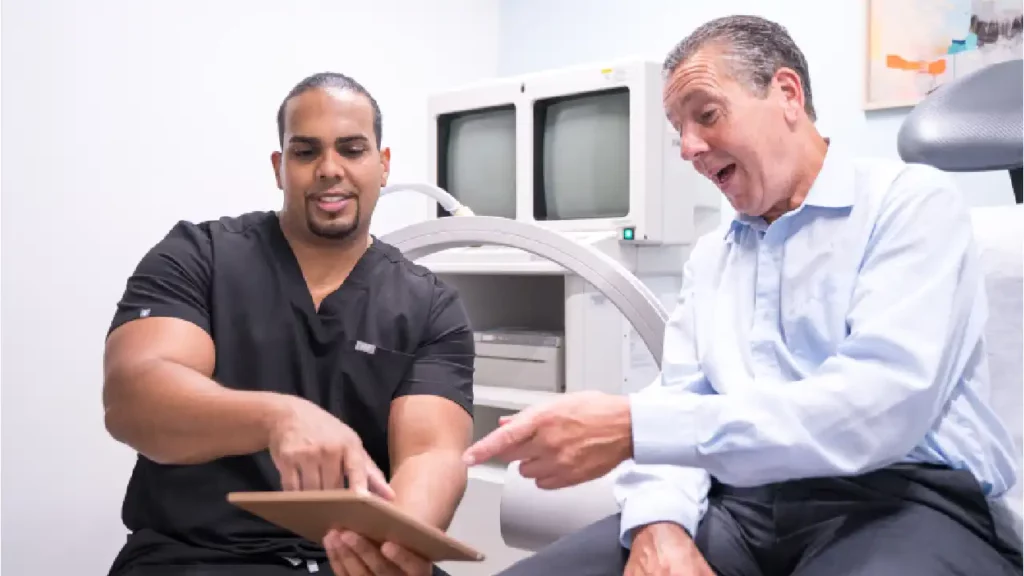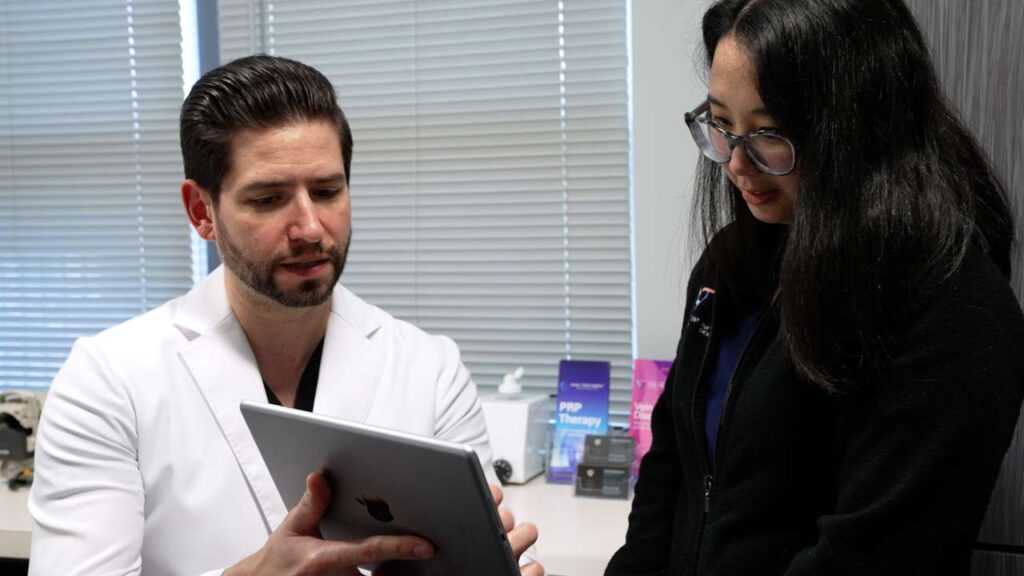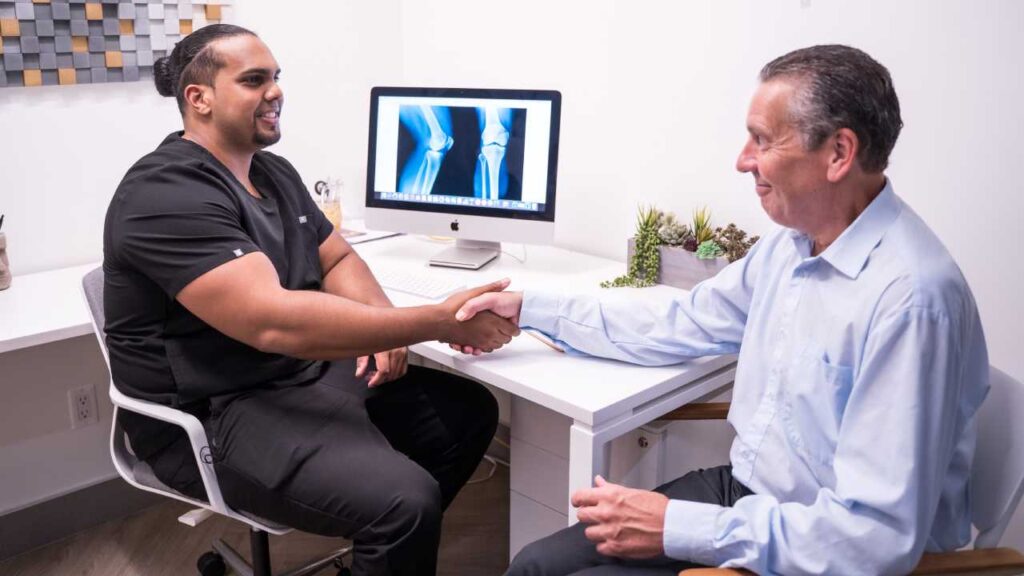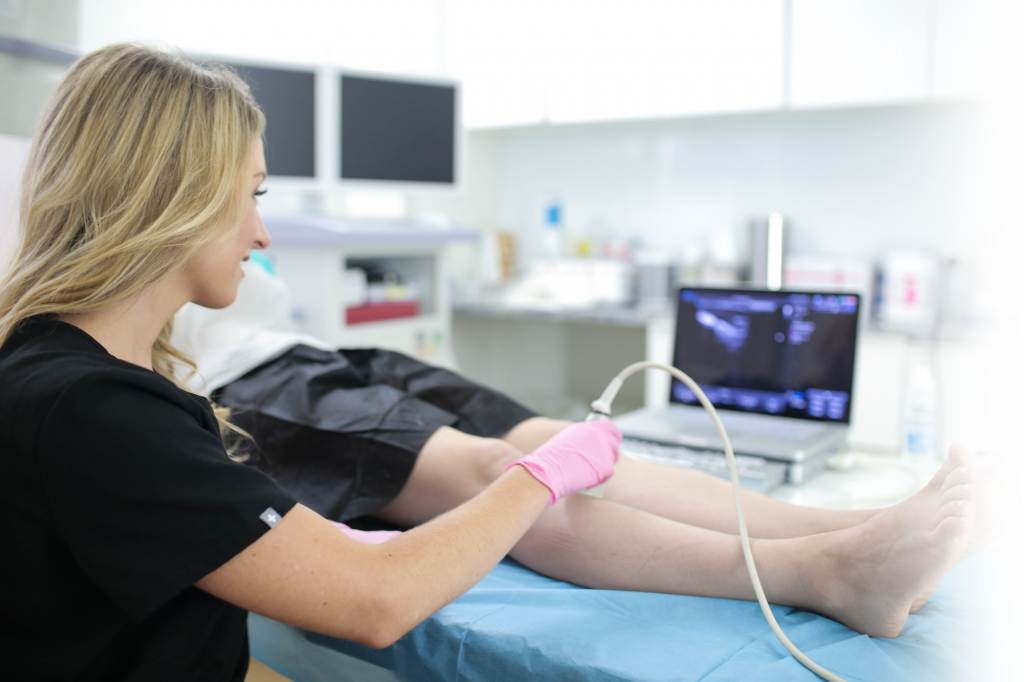What Can Get Rid of Varicose Veins and Venous Insufficiency?
If you’re one of the millions with bulging or painful varicose veins, you probably can’t wait to get rid of them. Varicose veins and spider veins are typically caused by an issue called Chronic Venous Insufficiency (CVI). This disease involves weakened or broken venous valves that allow blood to accumulate and regress within veins, causing those bothersome telangiectasias and varicosities. If you want to get rid of those unsightly blood vessels for good, you must also address venous insufficiency.
But can venous insufficiency be cured, or are you destined for more spider veins and varicose veins? The answer depends largely on the vein treatment you seek, the vein doctor who performs it, and your current lifestyle. Click HERE to visit our Harvard-trained vein doctors in New Jersey who relieve vein issues and also help prevent new ones.
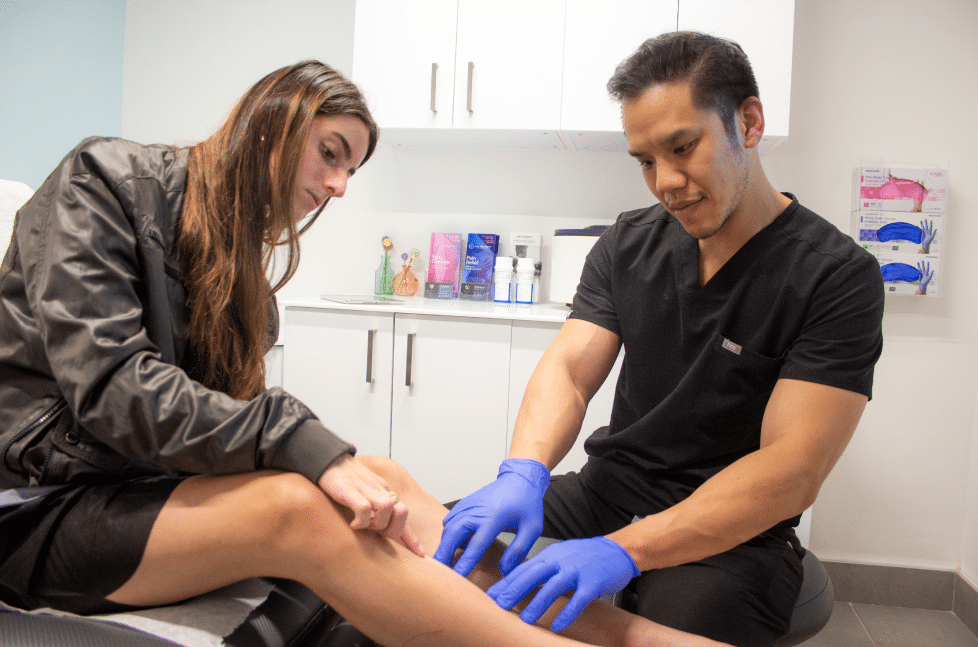
Does Varicose Veins or Spider Veins Treatment Last Forever?
No one enjoys having spider veins or varicose veins. But it’s unappealing to pursue varicose veins or spider veins treatment, if they’ll simply return after treatment. Some spider and varicose veins treatments only address the superficial damage. But since most unhealthy surface veins stem from issues in deeper veins, treatment requires that vein doctors look further than skin deep.
It’s important to choose a board certified vein specialist who knows to check for Chronic Venous Insufficiency before treating the veins at the surface. If broken valves are not sealed off, blood will continue to pool in the vein, producing more spider veins, varicose veins, and unpleasant symptoms like leg swelling, cramping, heaviness, restlessness, itching, discoloration, and leg pain. If the vein doctor addresses vein disease, as well as your surface issues, your spider vein or varicose vein won’t return. In addition, the doctor must choose the right treatment method. Read on to explore your options.
What’s the Best Treatment for Varicose Veins in Legs?
The best treatment for varicose veins in the legs (the most common location), depends on the patient. Some varicose veins respond well to liquid or foam sclerotherapy. Others are better suited to endovenous laser or radiofrequency ablation. Some veins are more amenable to vein adhesives, while others require a dual-approach, like mechanical and chemical ablation. This is why it’s so important to choose a qualified vein doctor at an accredited vein treatment center for your care.
The answer to the right varicose veins treatment is determined by an analysis of your medical history, symptoms, venous anatomy, and preferences. Our New Jersey vein specialists are all certified diplomates who are experts in selecting the right treatment for each individual. We frequently customize or combine modalities to meet patients’ needs. With our vast array of treatment options, we have the perfect solution for you.
Are Varicose Veins in Arms the Same as Veins in Upper Thigh?
Varicose veins are most common in the lower legs, upper thighs, and pelvic region. They’re more prevalent in the lower extremities because veins must pump blood from the feet to the heart after it delivers nutrients and oxygen throughout the body. The distance, combined with gravity and body weight, makes leg veins more prone to valve failure. However, you can develop varicose veins in arms or other regions too.
Varicose veins are more common in women, due to hormonal changes that increase blood pressure, like pregnancy. For varicose veins in pregnancy, treatment will need to wait until after delivery. But you can have a consultation now to check your vein health and book your postnatal treatment. In case you’re wondering, “Do men get varicose veins?”, the answer is yes! Men are prone to varicosities too, particularly if they have a family history of them or have obesity or a job that requires long periods of sitting or standing. Our vein center treats all types of vein damage and vein disease, so schedule a consultation today!
How Do I Choose CVI or Engorged Veins Treatment?
How do you ensure that your veins are treated correctly? Start by determining whether the vein treatment specialist is an actual vein doctor. It’s not essential that they be a vascular surgeon, since most vein issues don’t require surgery. But look for designations like vein specialist or phlebologist, rather than dermatologist, cosmetic surgeon, or esthetician.
Vein doctors are trained to eliminate vein diseases, not just cosmetic damage. Ask which vein treatment methods they use and why they prefer them. You want a vein doctor who favors minimally invasive procedures, to ensure they’re up to date on advances in venous medicine. Surgeries like phlebectomy are largely displaced now by newer, gentler methods. The least invasive methods, like wearing compression stockings, can reduce certain symptoms, like leg swelling or leg pain. But only a vein doctor can eradicate damaged veins. Minimally invasive procedures are the perfect solution, since they eliminate the risks, downtime, hassles, and expenses of surgery, while still treating the broken blood vessel, rather than just minimizing symptoms.
Faulty vein valves cannot heal themselves or be replaced, so a vein doctor must close off that errant pathway and prompt blood to flow into viable veins. Often, overstretched vein walls contribute to valves that don’t close completely, so our vein doctors address the full extent of the issue, to prevent it from recurring. We use ultrasound guidance to make sure the entire damaged area is treated. Our exceptional varicose veins and spider veins treatment options provide long-term relief of vein damage and venous insufficiency.
Red Veins on Legs- Is Getting Rid of Them at Home Feasible?
If you have bulging veins or red veins on the legs, getting rid of them requires different tactics, depending on what type of vein they are. Spider veins are small and often develop in clusters, and they don’t protrude above the skin. Varicose veins are larger and usually protuberant, and while you may have more than one, there aren’t multiple varicosities branching out from a central point, like with spider veins.
Spider veins that don’t stem from Chronic Venous Insufficiency can occur on the face and can occasionally be treated with surface lasers, but they can’t be erased by home remedies like wearing compression stockings. But varicose veins or spider veins in the legs usually require endovenous procedures like sclerotherapy, radiofrequency ablation, or vein adhesives. You cannot fully eliminate either type at home. But lifestyle adjustments like elevating the legs while at rest, avoiding long periods of sitting or standing, exercising, and managing your weight can help prevent new veins from developing.
When to Seek Treatment: What Are the Varicose Veins Stages?
Each patient experiences varicose veins differently. Some will have no symptoms, while others have issues like leg pain, leg swelling, leg restlessness, or heaviness in their legs that causes leg fatigue. As venous insufficiency progresses, some patients develop venous ulcerations, venous stasis dermatitis, and heavy bleeding with minor abrasions near the vein. Hyperpigmentation and flaky skin are possible, as are serious complications like blood clots and DVT.
So, the best time to see a vein specialist is whenever you notice the varicosity or any of the aforementioned symptoms. An absence of symptoms does not mean you don’t have vein disease. If you have chest pain, shortness of breath, fainting, or profuse bleeding, head to the emergency room. For less severe symptoms, book an appointment at our premier vein center in New Jersey. Early intervention is the best way to prevent complications.
Do All Thick Veins & Veins Popping Out on Legs Need Repair?
No, not every varicosity or telangiectasia requires treatment. The decision to treat a vein depends on the patient’s health, the presence of vein disease, the severity of vein damage, the cause, and the presenting symptoms. Our NJ vein doctors never recommend treatments you don’t need, especially invasive procedures like vein stripping surgery. We’ll let you know the risks associated with ignoring the defective vein, and explain the various options for treating the vein.
Some patients, especially those with small spider veins, don’t require repair, from a medical perspective, but still choose it to improve their skin’s appearance. For others, treatment is not only necessary, but life-altering, if their vein contains blood clots or causes debilitating symptoms. Visit our renowned vein center in New Jersey for transparent answers about spider veins, varicose veins, and venous insufficiency.
Can Venous Insufficiency Be Cured in New Jersey?
You might assume the best vein doctors are in big cities like NYC or LA. While we do have vein centers in Manhattan, we also have Ivy League physicians right outside your door. With offices in Clifton, Paramus, Woodland Park, and Woodbridge, our award-winning vein doctors are nearby and ready to treat your veins. We have the latest technology and a depth of experience that’s unmatched in New Jersey. Visit us today for prompt, permanent solutions for your veins!
